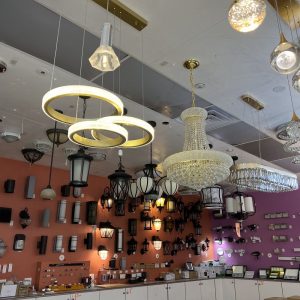Do you ever wonder how the vibrant cityscape of Singapore comes alive at night? Well, let us shed some light on the matter. In this article, we will explore the evolution of lighting in Singapore and how it has shaped the nocturnal experience. From urban planning to iconic landmarks, discover how innovative illumination techniques have transformed this city into a mesmerizing spectacle after dark. Join us as we delve into sustainable lighting solutions that are paving the way for a brighter future.

The Evolution of Lighting in Singapore
You’ll be amazed by how lighting has evolved in Singapore over the years. From its humble beginnings, where the city was illuminated by gas lamps and oil lanterns, to the present day, where state-of-the-art LED lights adorn every corner of the cityscape, Singapore has come a long way in terms of lighting technology. The transformation began in the 1950s when electricity became widely available, leading to the introduction of fluorescent lights and incandescent bulbs. As urbanization accelerated, so did advancements in lighting design and efficiency. Today, Singapore boasts an impressive array of architectural lighting techniques that highlight its iconic landmarks and create stunning visual displays. This evolution in lighting has not only enhanced safety and visibility but also added a touch of magic to the night scene. With such innovative use of light, it’s no wonder that Singapore is often referred to as the “City in a Garden.” Transitioning into urban planning and illumination, these advancements have played a crucial role in shaping Singapore’s unique nighttime aesthetic.
Urban Planning and Illumination
When it comes to urban planning and how the city is illuminated, it’s important to consider the impact of lighting design on the overall ambiance. In Singapore, a city known for its vibrant night scene, lighting plays a crucial role in shaping the urban landscape. The strategic placement of lights not only enhances visibility but also creates a captivating atmosphere that draws people in. From iconic landmarks like Marina Bay Sands to bustling streets and public spaces, every aspect of Singapore’s urban environment is carefully lit to create an immersive experience for both residents and visitors alike. The use of different lighting techniques such as accent lighting, wall grazing, and color-changing LEDs adds depth and vibrancy to the cityscape. Furthermore, lighting design also takes into account energy efficiency and sustainability by incorporating LED technology and smart control systems. Overall, urban planning in Singapore prioritizes illumination as an integral element in creating a visually stunning and inviting nighttime cityscape.
Iconic Landmarks and Nighttime Illumination
The iconic landmarks in Singapore are beautifully lit at night, creating a captivating ambiance throughout the city. As you stroll along the Marina Bay Sands promenade, you’ll be mesmerized by the colorful lights that illuminate the futuristic architecture of this world-renowned hotel and casino complex. The Supertrees at Gardens by the Bay stand tall, casting a magical glow with their intricate lighting designs. As you approach the famous Merlion statue, its majestic figure is bathed in soft, warm light, enhancing its grandeur against the dark sky. The Helix Bridge gleams with a series of LED lights that change colors seamlessly, adding a dynamic element to its sleek structure. These carefully crafted lighting installations not only enhance visibility but also create an immersive experience for visitors, transforming Singapore into a vibrant nocturnal wonderland.
Sustainable Lighting Solutions for a Brighter Future
As we strive for a brighter and more sustainable future, it’s important to explore innovative lighting solutions that minimize energy consumption and maximize efficiency. One such solution is the use of LED lights. LED stands for Light Emitting Diode, which is a semiconductor device that emits light when an electric current passes through it. LED lights have several advantages over traditional incandescent bulbs. They are highly energy-efficient, converting most of the electricity they consume into light rather than heat. This not only reduces energy waste but also lowers electricity bills. Additionally, LED lights have a longer lifespan compared to incandescent bulbs, reducing the frequency of replacements and further minimizing waste. With their ability to produce bright illumination while consuming less energy, LED lights are undoubtedly a sustainable lighting solution for a brighter future.
